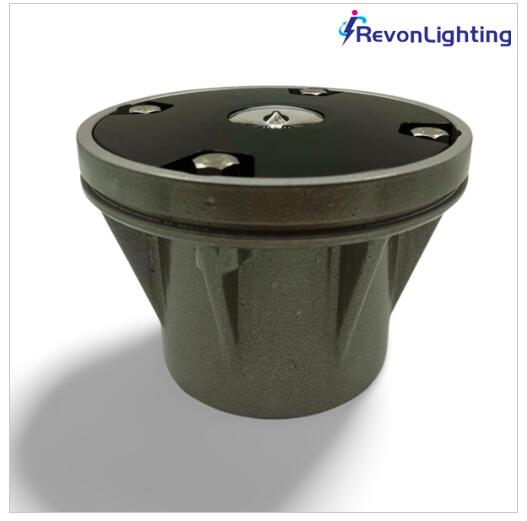Aviation LED Landing Lights: Illuminating the Future of Flight Safety
In the high-stakes world of aviation, every component plays a crucial role in ensuring safety and efficiency. Among these, aviation LED landing lights have emerged as a game-changing innovation, offering superior visibility, energy efficiency, and reliability compared to traditional lighting systems. As aircraft technology advances, these lights are becoming the standard for modern runways and aircraft, enhancing pilot visibility during critical phases of flight. This article explores the benefits, applications, and future trends of aviation LED landing lights, demonstrating their vital role in safer landings and takeoffs.
The Evolution of Aircraft Landing Lights
Historically, aircraft relied on incandescent or halogen bulbs for landing lights. While functional, these lights had significant drawbacks:
Short lifespan (frequent replacements required)

High energy consumption (increased fuel costs)
Limited brightness (reduced visibility in poor weather)
The shift to aviation LED landing lights has addressed these challenges, providing a more efficient and durable solution for both commercial and military aviation.
Key Advantages of Aviation LED Landing Lights
1. Enhanced Brightness and Visibility
Aviation LED landing lights produce a crisp, intense beam that improves runway visibility, especially during nighttime operations, fog, or heavy rain. Their focused illumination helps pilots identify runway markings and obstacles more clearly.
2. Energy Efficiency
LEDs consume significantly less power than traditional bulbs, reducing the electrical load on aircraft systems. This efficiency translates to lower fuel consumption and extended battery life for smaller aircraft.
| aviation led landing lights |
3. Longevity and Durability
With lifespans exceeding 50,000 hours, aviation LED landing lights require far fewer replacements than halogen or xenon lights. Their solid-state construction also makes them resistant to vibrations and extreme temperatures.
4. Instant On/Off Capability
Unlike conventional lights that take time to warm up, LEDs provide full brightness immediately—a critical feature during emergency landings or rapid deployment scenarios.
5. Reduced Maintenance Costs
The extended lifespan and durability of LEDs minimize maintenance downtime, allowing airlines and operators to reduce servicing frequency and associated labor costs.
Applications in Modern Aviation
1. Commercial Aircraft
Major airlines increasingly equip their fleets with aviation LED landing lights to improve safety and operational efficiency. Boeing and Airbus now integrate LEDs into newer aircraft models.
| aviation led landing light |
2. Military and Defense
Military aircraft benefit from the ruggedness and reliability of LEDs, which perform well in harsh environments, including desert heat and Arctic cold.
3. General Aviation
Private pilots and small aircraft operators use aviation LED landing lights for better visibility and lower operational costs, particularly in night flying.
4. Runway Lighting Systems
Beyond aircraft-mounted lights, many airports now incorporate LED technology in runway edge lights, threshold lights, and approach lighting systems for enhanced ground visibility.
Technological Innovations in LED Landing Lights
1. Adaptive Lighting Systems
Some advanced aviation LED landing lights adjust brightness based on ambient conditions, optimizing visibility while conserving energy.
2. Smart Diagnostics
Newer models feature built-in health monitoring, alerting maintenance crews to potential issues before failures occur.
3. Hybrid Solar-LED Solutions
For remote airstrips, solar-powered aviation LED landing lights provide an off-grid lighting solution, ensuring safe operations in areas without reliable electricity.
Regulatory and Industry Standards
To ensure uniformity and safety, aviation LED landing lights must comply with strict regulations from:
FAA (Federal Aviation Administration)
EASA (European Union Aviation Safety Agency)
ICAO (International Civil Aviation Organization)
These standards cover light intensity, beam spread, color temperature, and durability to guarantee optimal performance in all conditions.
The Future of Aviation LED Landing Lights
As technology evolves, several trends are shaping the future of aviation LED landing lights:
Increased Integration with Avionics: Lights that sync with flight systems for automated brightness adjustments.
Advanced Heat Dissipation: Improved thermal management for even longer lifespans.
More Compact Designs: Smaller, lighter LED modules that maintain high output.
Aviation LED landing lights represent a significant leap forward in flight safety and efficiency. Their superior brightness, energy savings, and durability make them indispensable for modern aircraft and runway operations. As the aviation industry continues to prioritize sustainability and performance, LED technology will play an increasingly central role in ensuring safer skies for pilots and passengers alike.
With ongoing advancements in adaptive lighting and smart diagnostics, aviation LED landing lights are set to become even more intelligent and reliable—solidifying their place as the gold standard in aircraft illumination. The future of aviation lighting is not just bright; it’s LED-powered.
